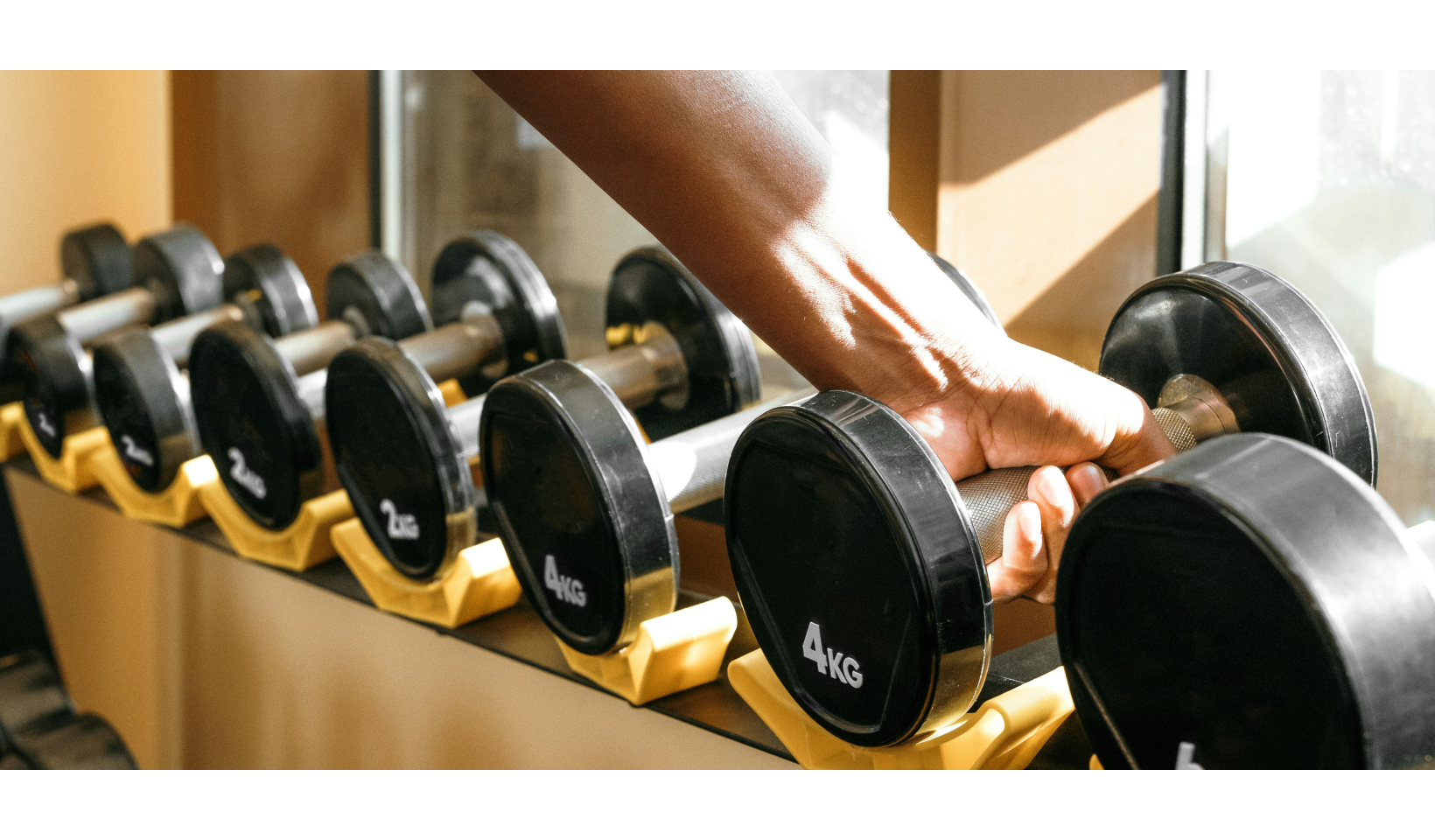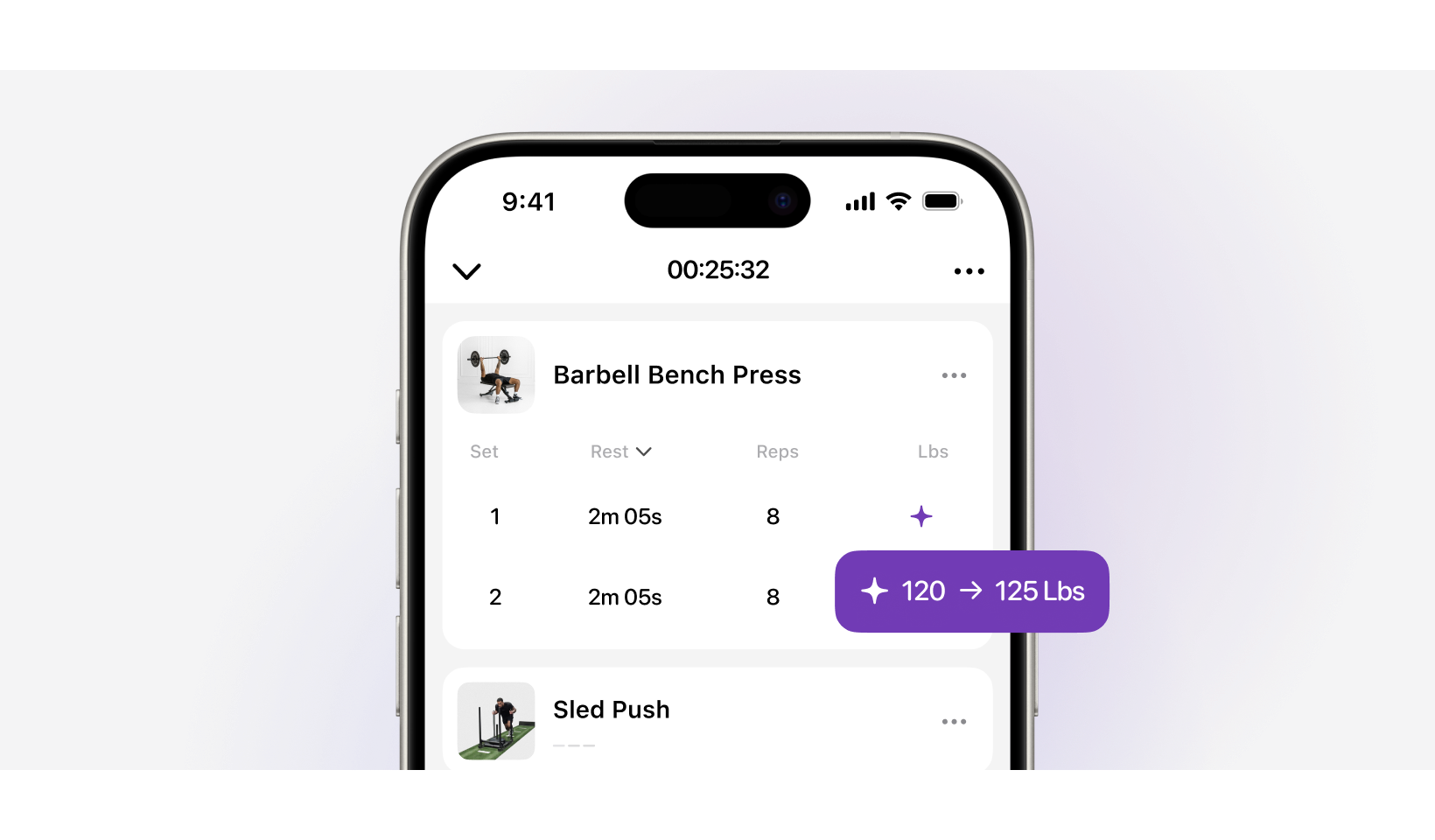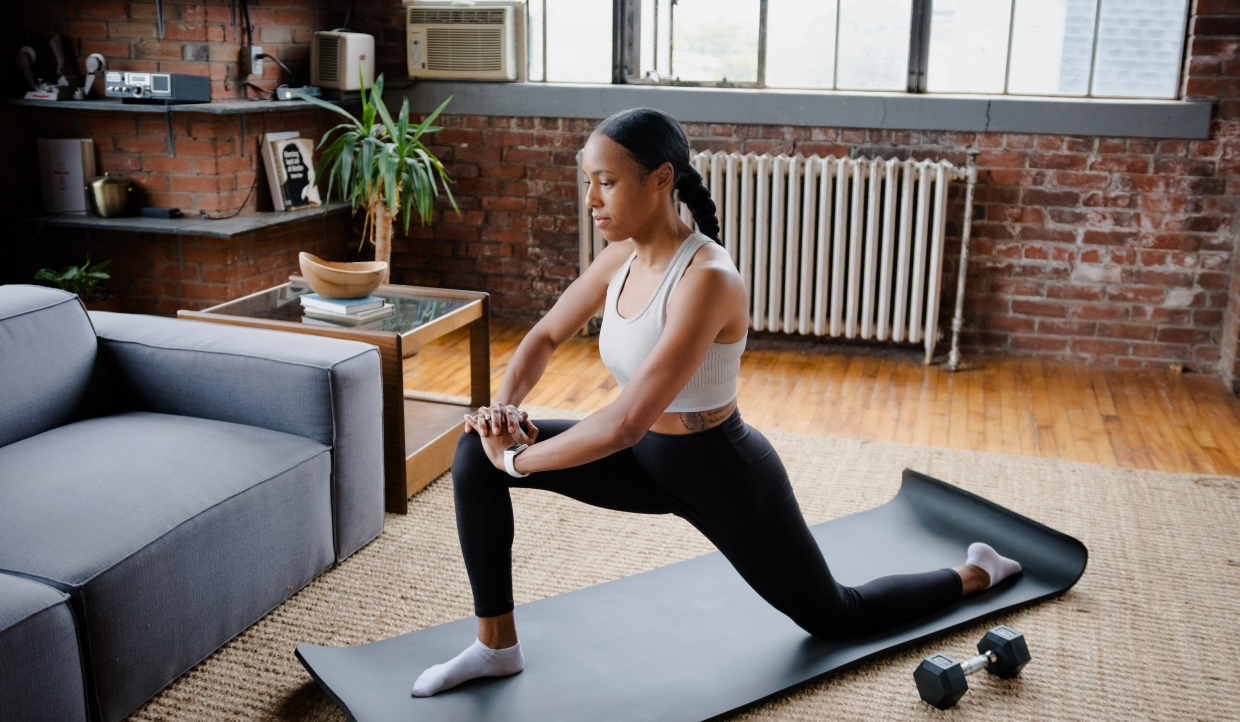
Training
September 15, 2024
How to Progress in Strength Training: Adjust the Load, Reps, or Rest Period?
Steadily increasing the difficulty of your workouts is key to building muscle and strength over time. But how should you approach progression? Should you lift heavier, do more reps, shorten rest periods, or something else entirely?
Let’s break it down.

Where to Start
Effective progression begins with a solid foundation. Starting too light may delay your progress, while starting too heavy can lead to early burnout.
To set yourself up for success, select a weight that allows you to stay within your target rep range for your specific goal. Here's a general guide:
- 3-6 reps for building pure strength
- 5-10 reps for a mix of strength and muscle gain
- 10-20 reps primarily for muscle growth
Choose a weight that challenges you but leaves you with 2-3 reps in the tank for each set.
Test and Adjust
You won’t always pick the perfect weight for your target rep range on the first try—and that’s fine. The key is to experiment. Find a weight that feels challenging but doesn’t compromise your form or feel too light.
For instance, if your target is 6-8 reps on the bench press but you can comfortably do 10, add 5 lbs to the bar for the next set. Conversely, reduce the load by 5 lbs if the weight feels too heavy and you can’t complete the set properly.
Adding Weight and Reps
Progression depends on the exercises and your goals. If your focus is on getting stronger, aim to gradually increase the weight and train in a lower rep range, such as 3-6.
For those more interested in muscle growth than sheer strength, there's more flexibility. You can train in higher rep ranges and focus on adding reps before increasing the weight.
For example, when doing lat pulldowns, pick a weight that allows you to perform 10 solid reps. Over time, work up to 15 reps before increasing the weight and going back to 10 reps. The same approach works for isolation exercises like bicep curls—if maintaining good form is difficult at 10-12 reps, focus on lighter weights and higher reps (up to 20) before adding more weight.
Train Fitness AI can help make this process even easier by automatically progressing your weights and suggesting smart weight increases based on your performance. This ensures that you're always challenging yourself at the right level, removing the guesswork from your progression.

A Brief Note on Rest Periods
Rest periods play an important role in your performance. The goal is to rest just long enough to maintain your rep count across sets. If you hit 10 reps in the first set, aim to get at least 8 reps in the last.
Here’s a general guide for rest times:
- 3-5 minutes for heavy sets (3-6 reps)
- 2-3 minutes for moderate sets (6-10 reps)
- 1.5-2.5 minutes for lighter sets (10-15 reps)
- 1-2 minutes for the lightest sets (15+ reps)
While shortening rest periods can be a form of progression, it’s not usually the best method unless time is tight. Reducing rest can negatively affect performance and increase injury risk when lifting close to your maximum capacity.

Conclusion
Progression in strength training varies based on your goals. Whether you aim to build strength or muscle, success comes from gradually increasing weight, adding reps, and adjusting rest periods. The key is finding the right balance to challenge your body without overdoing it.
With Train Fitness, progression becomes simpler. Our AI tracks your performance and automatically suggests weight increases, helping you stay on track and push yourself effectively. This ensures you're always progressing at the right pace to reach your full potential.
Share This Article:
Recommended

Training
December 01, 2024
Benefits of Autoregulation: Adjust Workouts to Your Readiness
Autoregulation is the ability to adjust training according to how much load a person can bear that day. As our performance levels vary day-by-day …

Training
November 17, 2024
Understanding Tempo: How Controlled Reps Can Boost Your Gains
Tempo training is basically a way of manipulating the speed of your reps instead of lifting mindlessly. This is done by breaking down your reps …

Training
November 01, 2024
How to Use RPE to Maximize Muscle Growth and Strength
Ready to take your workouts to the next level? Discover how RPE can transform your strength training approach and unlock new gains safely and effectively!

subscribe to our newsletter
Contact Us
hello@trainfitness.aiFind Us
130 Spadina Avenue, Toronto,
Ontario, M5V 0H4, Canada
©2025 All Rights Reserved

